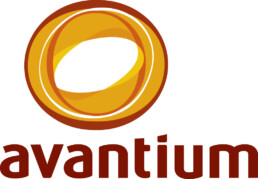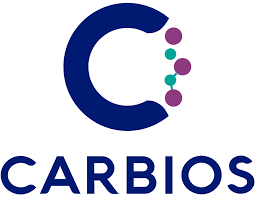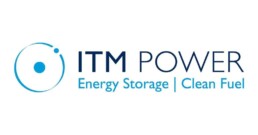Bryan, Garnier & Co hosted a clean mobility and sustainability conference on Monday, June 19, 2023. The conference featured C-level executives from leading companies in the EV charging, hydrogen, green chemistry, and biomethane sectors.
The day was structured around a series of meetings that brought together companies and investors. Antoine Herteman, President of AVERE, the main French association responsible for promoting electric mobility, delivered a keynote speech that provided a detailed overview of upcoming trends in e-mobility.
Throughout the event, with the help of feedback from management, investors, and analysts, a few topics were identified as trends that will shape the future of e-mobility, hydrogen, green chemistry, and biomethane. BG IRIS analysts provided an overview of the key themes that were identified.
EV charging: the beginning of a huge wave
While the past five years have witnessed a gradual increase in electric vehicles (EVs), we now see EV charging as the most dynamic segment of mobility today. Whether it’s private or public, slow or fast, electric car owners rely on charging infrastructure deployment. To address this unmet need, European and domestic regulations have implemented various measures, including subsidies and ICE-restriction deadlines, to stimulate the charging ecosystem. In this context, original equipment manufacturers like Alfen, F2MeS (NHOA), and Kempower, as well as charging point operators such as Atlante (NHOA), will play a crucial role in the adoption, use, and maintenance of charging points. We have also identified what we believe could be the next technological disruptions in the EV charging market: smart charging, data aggregators, and next-gen batteries (li-ion, solid-state, li-sulphur). These innovations will enable new business models such as vehicle-to-grid (V2G) and vehicle-to-home (V2H).
Green Hydrogen: IRA, still the major driver of the industry
Allocating around $370 billion for clean energy, the US Inflation Reduction Act (IRA) has implications for climate, trade, security, and foreign policy for Europe and the world. The IRA aims to diversify supply chains from China and increase clean electricity production, on-shoring the manufacture of key energy transition components, accelerating the electrification of transport, and deploying leading-edge technologies such as carbon capture and clean hydrogen. The IRA can bring the US closer to meeting its pledge to cut US emissions by 50%-52% by 2030 from 2005 levels.
The IRA has prompted a renewed focus on European industrial policy, with leaders realising that the response to the IRA must be domestic. To address the challenges posed by the IRA, the EU is doubling down on its vision to become a green powerhouse, with the creation of an EU Green Deal Industrial Plan and the Net Zero Industry Act. This new approach to green industrialisation requires a new set of rules among partners, with a focus on openness and mutually beneficial economic policies, whether getting big or greener in the medium-term.
The Green Deal Industrial Plan is a strategy created by the EU to enhance the competitiveness of Europe’s net-zero industry and accelerate the transition to climate neutrality by 2050. The plan aims to create a more supportive environment for scaling up the EU’s manufacturing capacity for net-zero technologies and products required to meet Europe’s ambitious climate targets. The Green Deal will be financed through an investment plan – InvestEU, which forecasts at least €1 trillion in public and private investment. The EU clearly aims to create a more supportive environment for scaling up the EU’s manufacturing capacity for net-zero technologies and products required to meet Europe’s ambitious climate targets. Although incomplete, the Net Zero Industry Act acts as a complement to boost energy related production on the European soil by facilitating financing and establishment of new factories and plants, and setting up local production quotas.
Piling into regulations and scrutiny, Europe might temporarily have lost traction in the green hydrogen space. Nevertheless, (i) the two Delegated Acts should inspire a renewed dynamic, guiding an immature industry by setting global standards for green hydrogen exports and (ii) RED II should progressively reinforce the whole ecosystem structure, allowing for wider and faster deployment of green hydrogen equipments. This should pave the way for balanced growth on both side of the Atlantic in the medium-term, which alkaline and PEM equipment providers such as NEL, HydrogenPro, McPhy or ITM Power but also solid-oxide engineering like Ceres Power and hydrogen storage/distribution-oriented companies like Hexagon Purus should benefit in the forthcoming future.
Green chemistry: from plastic recycling to brand new plant-based alternatives to petrochemical products
Plastic pollution is a growing global issue. Over 35 countries around the world have already taken action by banning certain single-use plastics. For example, China has banned all non-compostable plastic bags in major cities since the end of 2020 and plans to extend this ban nationwide by 2022.
Regulations and societal expectations are intensifying globally to reduce plastic waste and promote better management of the plastics lifecycle. Industrial players are therefore eager to collaborate with innovative companies like Carbios and Avantium to initiate their transition towards greater circularity.
Carbios offers a unique solution for the recovery of PET by converting all types of PET waste back into their basic monomers (PTA, MEG). These monomers can then be used to manufacture new PET products (100% recycled and 100% recyclable) without any loss of quality, unlike other technologies such as thermal recycling or methanolysis, which require additional infrastructure investments.
Avantium is the most advanced company in the world when it comes to PEF (polyethylene furanoate), a 100% plant-based and recyclable plastic considered the next generation of polyester. In addition to being bio-based, PEF exhibits superior qualities in terms of barriers to CO2 and oxygen.
However, the bioeconomy is not limited to plastics. At a time when many of our everyday products still heavily rely on petroleum-based molecules, advanced and innovative companies can offer sustainable solutions. Afyren is a perfect example. Leveraging its strong expertise in green chemistry, the company provides a wide range of bio-sourced replacements for various industries, using an environmentally friendly technology that harnesses natural microorganisms.
Renewable methane: leveraging circularity to fuel tomorrow’s sovereignty
Energy sustainability and zero-emission targets are driven by multifaceted factors, for which pragmatism towards biomethane should play a key role in driving the journey towards lower energy mix carbonation, not only in Europe but worldwide. Indeed, biomethane is positioned as a crucial solution to meet the 2030/2050. This is even bolstered by biomethane benefits, (i) encompassing enhanced energy security, (ii) reduced dependency on Russian natural gas imports, and (iii) potential cost relief for households and businesses. Only in the EU, a target of 35bcm production has been set by 2030 as outlined in the REPowerEU plan, from the current 3bcm of biomethane and 15bcm of biogas, leaving ample room for growth in the medium-term, potentially a third of the region gas consumption at scale.
However, several questions need to be addressed to ensure the successful development of the biomethane sector. Firstly, regulatory improvements are necessary to meet stakeholders’ needs and drive investment in biogas conversion and the construction of new biomethane plants. Infrastructure development is another crucial aspect, as policymakers must address challenges related to the construction of new delivery points, enable efficient TSO/DSO reverse-flow operations, and streamline permit acquisition for biomethane projects. Collaboration among various stakeholders, including agricultural players, landfill operators, investors, DSOs, TSOs, and policymakers, is vital to accelerate the development of the renewable methane infrastructures worldwide.
As the biomethane industry continues to evolve, there is massive untapped potential in exploring additional feedstocks ranging from landfill wastes (for which Waga Energy leverages world-leading cryogenic-gas filtration technology and is able to address the entire biogas quality-span), biomass from marginal or contaminated land, to seaweed, or employing advanced technologies like hydrothermal gasification. Further projects are also being built around e-RNG, produced through power-to-methane processes combining captured carbon with green hydrogen and could additional growth opportunities.
Consequently, biomethane is poised to play a tremendous role going forward, aligning sustainability goals, energy security needs, and economic growth potential, but implementing appropriate measures, including permitting, financing, certification, and other supporting mechanisms, would be crucial in scaling up domestic biomethane industries.
Companies
Hexagon Purus ASA manufactures energy storage solutions. The Company offers high-pressure cylinders, complete vehicle systems, and battery packs, as well as hybrid mobility applications on light, medium, and heavy-duty vehicles, transit buses, ground storage, distribution, maritime, rail, and aerospace.
About Bryan, Garnier & Co
Bryan, Garnier & Co is a European growth investment bank that helps healthcare and technology companies become global champions. By combining extensive sector expertise with an entrepreneurial mindset, Bryan Garnier provides companies and their investors with independent growth strategic advice, and privileged access to buyers and capital in Europe, the US and Asia.
As a full-service investment bank, the firm offering includes private and public growth financing solutions, mergers and acquisitions (M&A) advisory, research insights, and institutional sales & execution. Founded in 1996, Bryan Garnier & Co is an independent partnership with around 200 employees located in major financial centres in Europe and the US.











